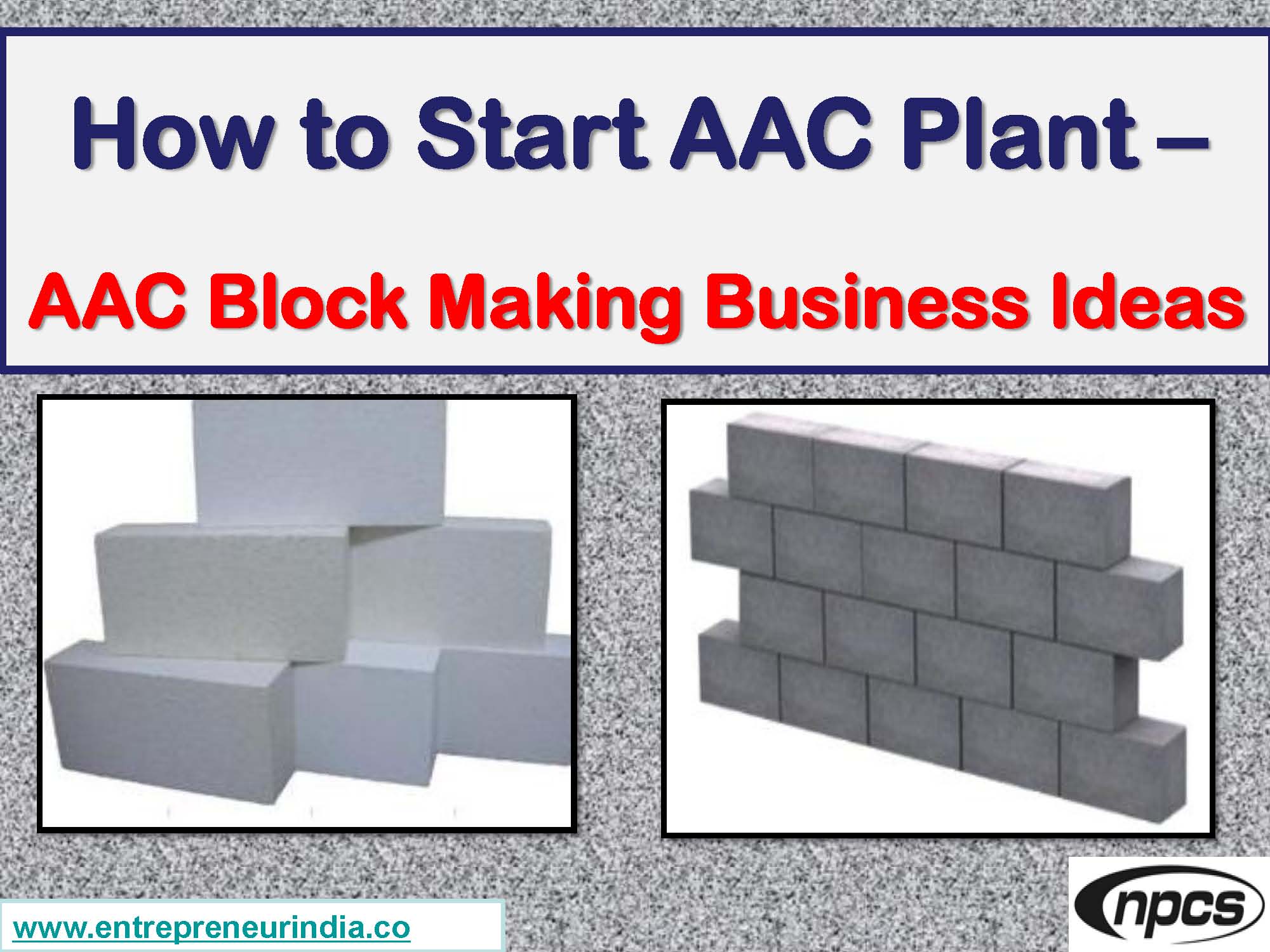
With the construction industry moving rapidly toward sustainable and energy-efficient building materials, AAC blocks (Autoclaved Aerated Concrete) have become a popular alternative to traditional red bricks. They are lightweight, fire-resistant, thermally insulated, and eco-friendly, making them ideal for residential, commercial, and industrial buildings. As demand rises across real estate and infrastructure projects, many entrepreneurs are now exploring how to start AAC plant – AAC block making business ideas to tap into this high-potential market. Moreover, with government incentives and green building certifications becoming more common, AAC block production offers long-term growth and profitability.
How to Start AAC Plant – AAC Block Making Business Ideas
Starting an AAC block manufacturing business requires significant planning, investment in advanced machinery, and access to quality raw materials. Below is a detailed guide covering essential steps and considerations for launching this capital-intensive yet rewarding venture.
1. Market Opportunity and Industry Outlook
AAC blocks are gaining momentum as a preferred walling material due to their structural and environmental advantages. In contrast to clay bricks, AAC blocks are 3–4 times lighter, which reduces the dead load on buildings and saves on construction costs. Moreover, with rapid urban development, smart city projects, and government restrictions on red brick kilns, the demand for AAC blocks is expected to grow steadily. Conduct local market research to identify real estate developers, government contractors, and builders who can become bulk buyers of your product.
2. Raw Materials and Production Process
The key raw materials used in AAC block manufacturing include:
-
Fly ash or sand (siliceous material)
-
Cement or lime (binding agent)
-
Aluminum powder (as a foaming agent)
-
Gypsum and water
The AAC manufacturing process involves:
-
Precise mixing of raw materials
-
Pouring into molds
-
Rising and pre-curing for initial setting
-
Wire cutting into block sizes
-
Autoclaving (steam pressure curing at 180–200°C)
-
Cooling, stacking, and packaging
Moreover, strict quality control is needed at each stage to maintain block density, compressive strength, and dimensional accuracy.
See More – Epoxy Resins Manufacturing Business
3. Machinery and Plant Setup
Setting up an AAC plant requires significant investment, but offers economies of scale in high-demand regions. Key machinery includes:
-
Jaw crusher and ball mill (for raw material preparation)
-
Batching and mixing equipment
-
Molding and casting units
-
Wire cutting machine
-
Autoclave chamber
-
Packaging and stacking equipment
A small-to-medium AAC block plant with a daily capacity of 50–100 cubic meters typically requires ?2–5 crores in investment. You’ll also need 1–2 acres of land, preferably near fly ash sources like thermal power plants. Moreover, access to electricity, water, and good transport infrastructure is essential for smooth operations.
4. Legal, Environmental, and Financial Considerations
To start AAC plant – AAC block making business, you must comply with several legal and environmental norms:
-
Udyam/MSME registration
-
GST registration
-
Pollution Control Board clearance
-
Factory license
-
BIS certification (IS 2185 Part 3)
-
Land conversion approval (if required)
Additionally, you can avail of government subsidies under schemes like the PMEGP, CLCS-TU (for tech upgrades), and energy-efficient plant financing. Moreover, your business can benefit from carbon credit trading and green building endorsements, improving its sustainability profile.
See More –Fish Processing Business
Conclusion
Understanding how to start AAC plant – AAC block making business ideas is the foundation for tapping into one of India’s fastest-growing construction segments. With the right investment, access to raw materials, and focus on product quality, AAC block manufacturing can deliver substantial returns. Moreover, as builders and architects look for sustainable and cost-effective solutions, AAC blocks are becoming the go-to material for modern construction. By starting an AAC plant, you’re not only building a profitable enterprise but also contributing to a cleaner, greener, and more efficient future in construction.




